
Recently, while attending an event in Mallorca, Spain, I spotted a foreigner wearing a tulsi bead necklace. When I commented on how ‘Indian’ it looks, he immediately apologised to me and said that he didn’t mean to appropriate it. I told him, “Absolutely not. It’s just a bead. It’s not made exclusively for Indians, and you are wearing it beautifully.” Sadly, that’s what’s happening in today’s woke culture — people are afraid to touch a garment like a sari because they think they’ll be labelled as cultural appropriators. But if the motives are right, and it’s not used to insult anyone, I would rather call it cultural appreciation.
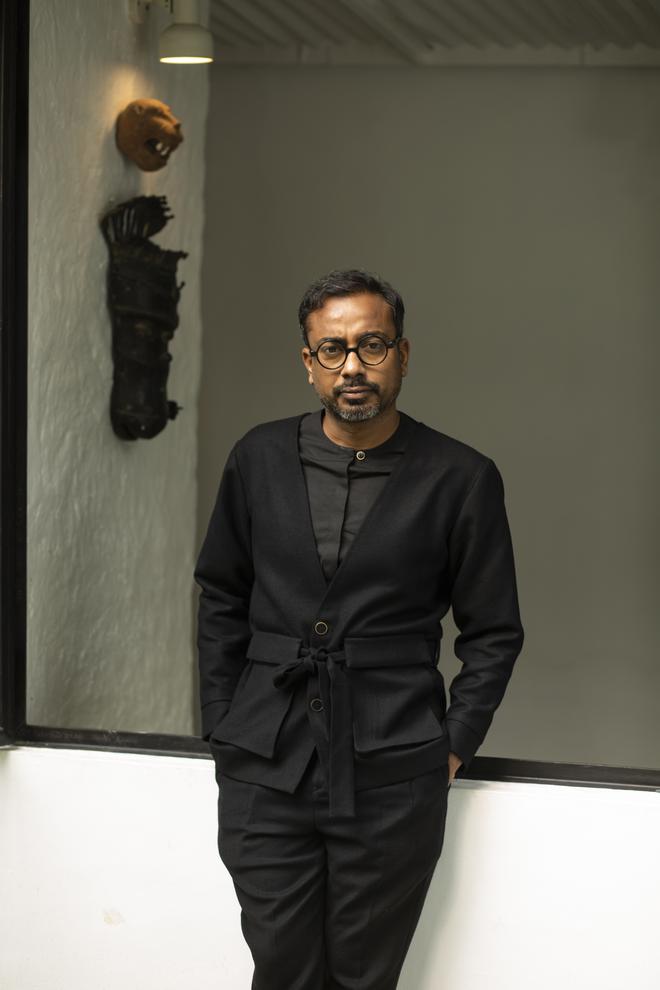
This is what I see happening at The Offbeat Sari exhibition at London’s Design Museum, on Kensington High Street. Conceptualised and curated by Priya Khanchandani, the museum’s British Indian head of curation, along with associate curator Rashmi Varma, the show, which opened last month in its large subterranean gallery, is very much dedicated to the drape’s evolution in the last 10 years. A period in which, as the curators have noted, the sari has experienced one of its most rapid reinventions in its 5,000-year history. It is an interesting perspective because it turns the whole sari story around, rooting the historical garment in today’s contemporary experiments and points of view.
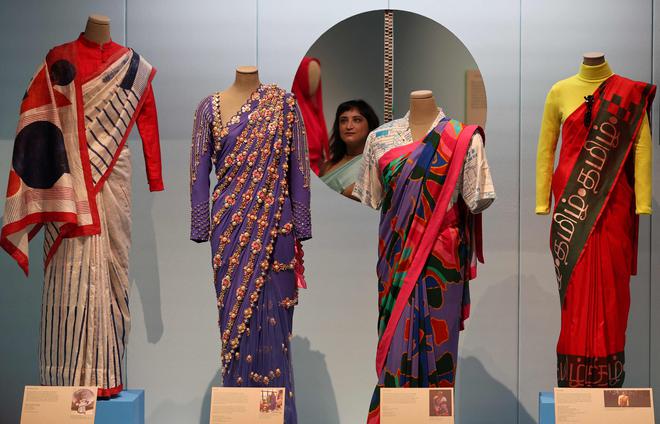
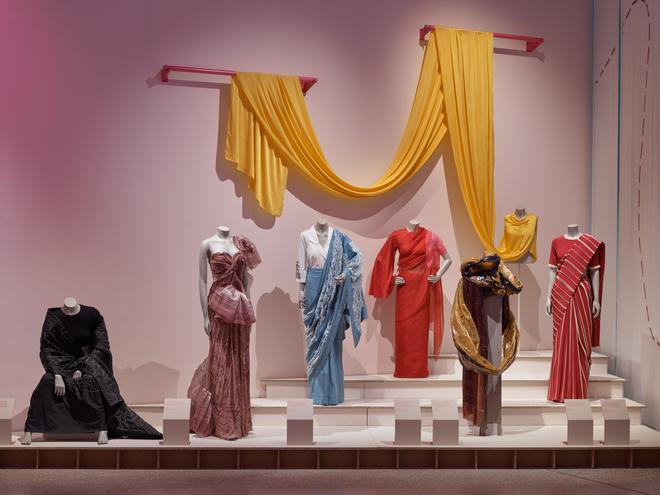
Many who came on the opening day wore saris, and it was great to see the gorgeous colours and drapes, and the happy smiles.
Raw Mango has four saris exhibited at the Design Museum: a Varanasi brocade kadwa sari, a printed silk twill, a chikankari sari, and a mashru silk. I was especially pleased by the chikankari, which was displayed in a lightbox. Even I hadn’t realised how beautiful it was until I saw it there.
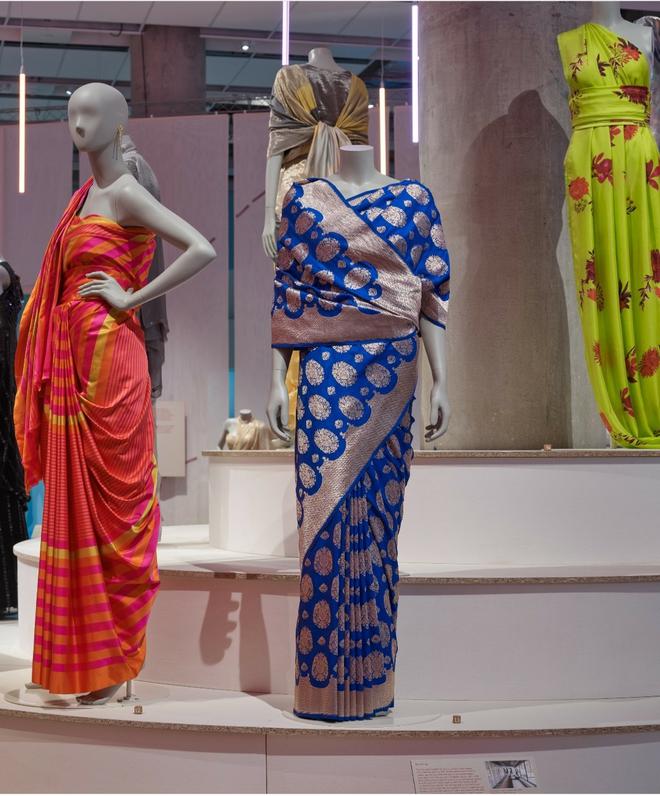
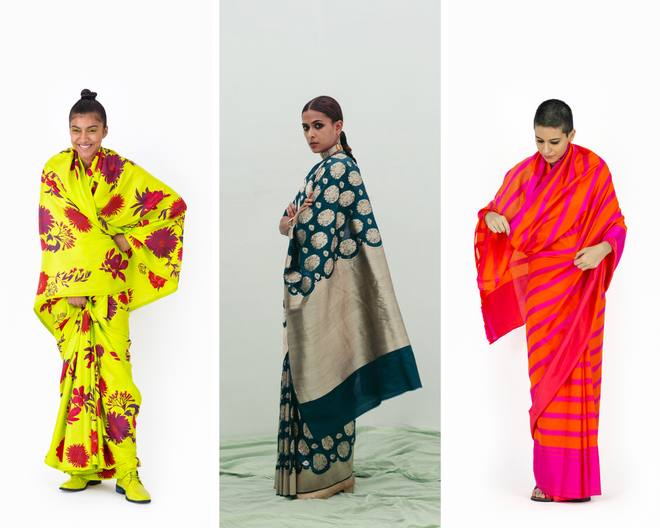
A drape that’s a gift
Till now, the sari has always been exhibited as a textile, as the fabric of India — be it at museums such as the V&A or across the many shows held in India. So, it has been about the past rather than the present. This is the first time that it is being shown as a garment, and that scores high with me because the sari is a garment which, while it has a vast and varied history, is also weaving a new story every day.
It is interesting that it is being exhibited in a design museum, exploring it as an ever-evolving design. What is a sari to us? Is it defined by its fabric, by the maker who weaves it, by its motifs, by the drape, by the wearer, or by all of these? It has so many facets. I believe it’s like a language. English stays relevant and alive by including words into its lexicon every year. If the sari needs to grow, it has to have infinite definitions and go through innumerable design innovations. It can’t be stuck in any one time — as an inheritance, as an immutable thing.

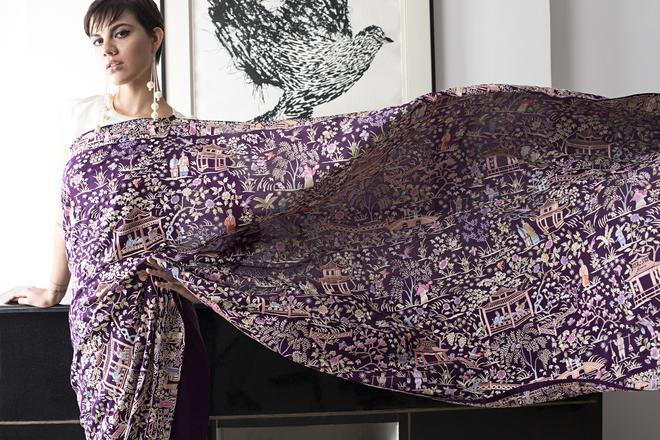
The sari suits any style, any size, any gender, and any occasion. If you think of the world as a family, then we have something very special to give to it — a beautiful garment that’s versatile, inclusive, intricate. And now design is playing a role. So it is important, both for us and the world.
Sixty saris [on-loan from Indian designers, studios and weavers] are on display. Divided into three sections, titled ‘Transformations’, ‘Identity & Resistance’, and ‘New Materialities’, they explore design interventions, reinvention as everyday wear, and textile craft and material innovations. I spotted many that I really like, such as Studio Medium’s handsfree sari, Abraham & Thakore’s drape embellished with sequins made from discarded X-rays, Rashmi Varma’s tailored 2x1 sari [with a blouse built in], Amit Aggarwal’ ruffled sari designed with boning created from industrial waste, and Rimzim Dadu’s sculpted steel wire sari.

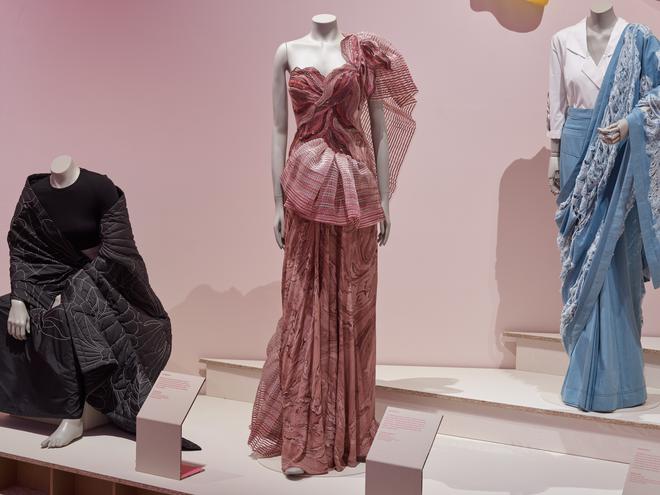
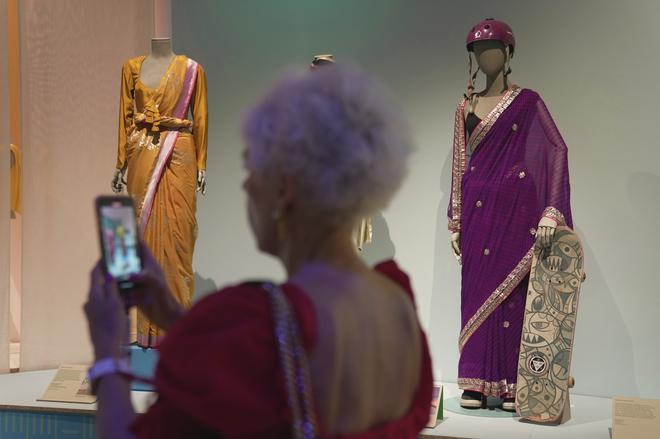
India is not one point of view. To show the multiple avatars of the sari, there are multiple design voices from the subcontinent.
The diaspora was in a very celebratory mood the day I was there. Many of them have dated ideas about the sari; they didn’t realise it could be interpreted in so many different ways, paired with sneakers or donned while rock climbing and skateboarding. Seeing the sari reclaimed to represent where India is going was a powerful moment for them.
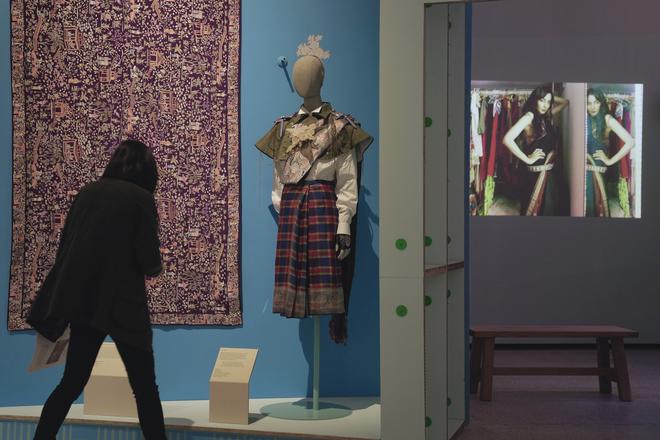
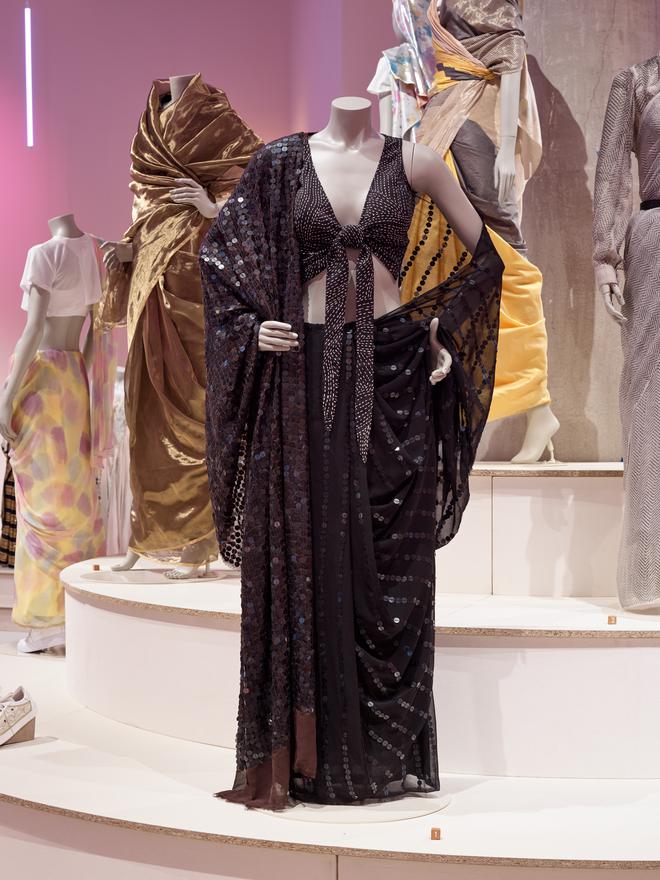
What can we do in India?
The Offbeat Sari is a great start, but I think now we need to look at what can be done in India. We still don’t have a single sari museum or an exhibition dedicated to the sari as a garment in our country. We have 110 drapes that have been documented, but we can make thousands of drapes out of it. The sari should be explored as textile, yarn, print, handloom, machine, garment. The exhibition has touched upon them, but the subject is so vast. So, how do we take forward what the Design Museum has initiated? It’s a question we need to answer soon.
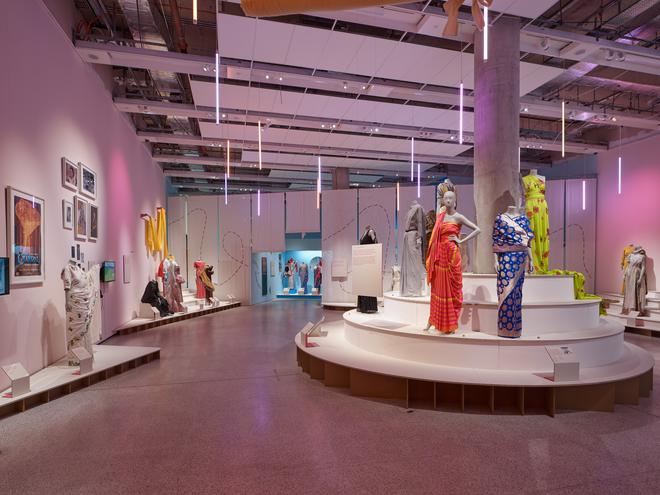
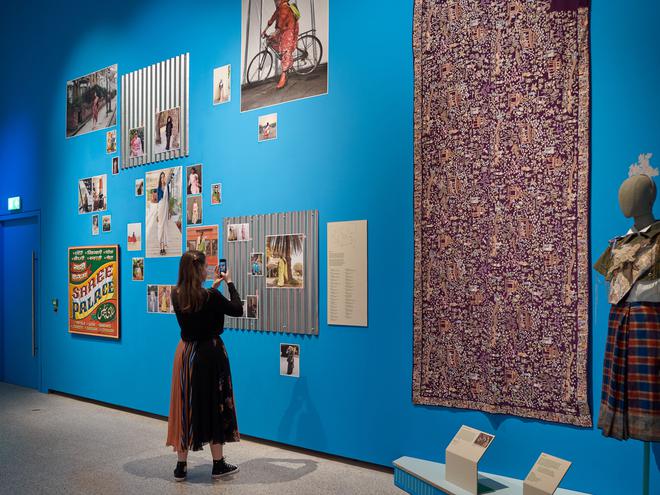
India has historically not been a country of museums. Documenting is not a strength; design hasn’t been important to any government, be it right or left. Forget saris, do we know enough about other design forms? We should be looking at exhibitions, curators, conversation, dialogues. Where are those?
Things are slowly changing now [especially with private museums coming into the picture], and I have hope for the future. We need to explore multiple voices, multiple efforts, multiple museums, multiple cities, multiple drapes, multiple people, multiple platforms — we need all of that. I hope it happens soon.
Sanjay Garg, the founder of Raw Mango, is renowned for reinterpreting heritage textiles.
As told to Surya Praphulla Kumar
The Offbeat Sari is on display at the Design Museum till September 17.







